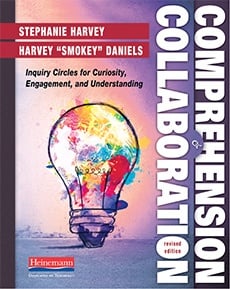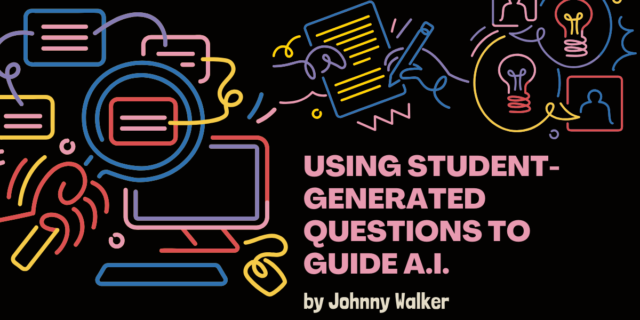
In the new and revised edition of Comprehension and Collaboration, Stephanie Harvey and Harvey "Smokey" Daniels address their approach to close reading. To Steph and Smokey, close reading is strategic reading.
Comprehension and Collaboration, Revised Edition ships in late June. In today's video blog, coauthor Steph Harvey lists the reasons for reading closely, noting that a strategic read of a text allows students to hurdle the background knowledge gap.
Comprehension Continuum
Answers Literal Questions
Answering literal questions shows that learners can skim and scan for answers, pick one out that matches the question, and have short-term recall. Does not demonstrate understanding.
Teacher Language: What is...? Where did...? Who was...? How did...? How many...?
Retells
Retelling shows that learners can organize thoughts and put them into their own words. Shows short-term recall of events in a narrative and bits of information in nonfiction. Does not, in and of itself, demonstrate understanding.
Teacher language: Tell me what happened... Tell me what this was about... Retell what you read...
Merges Thinking with Content
Real understanding takes root when learners merge their thinking with the content by connecting, inferring, questioning, determining importance, synthesizing, and reacting to information. Understanding begins here.
Teacher language: What did you think? What did you learn? What do you wonder?
Acquires Knowledge
Once learners have merged their thinking with the content, they can begin to acquire knowledge and insight. They can learn, understand, and remember. Shows more robust understanding.
Teacher language: What do you learn that you think is important to remember? Why does it matter? What do you think are some big ideas here?
Actively Uses Knowledge
With new insights and understandings, learners can actively use knowledge and apply what they have learned to the experiences, situations, and circumstances at hand to expand understanding and even take action.
Teacher language: What do you want to do about this? Is there a way you can get involved? What is your plan?
♦ ♦ ♦ ♦
 Comprehension and Collaboration, Revised Edition ships in late June. Get pre-publication savings with coupon code CANDC2.
Comprehension and Collaboration, Revised Edition ships in late June. Get pre-publication savings with coupon code CANDC2.
Stephanie Harvey has spent her career teaching and learning about reading and writing. Harvey "Smokey" Daniels has been a city and suburban classroom teacher and a college professor, and now works as a national consultant and author on literacy education.
Click here to view our official page for Comprehension and Collaboration, Revised Edition


